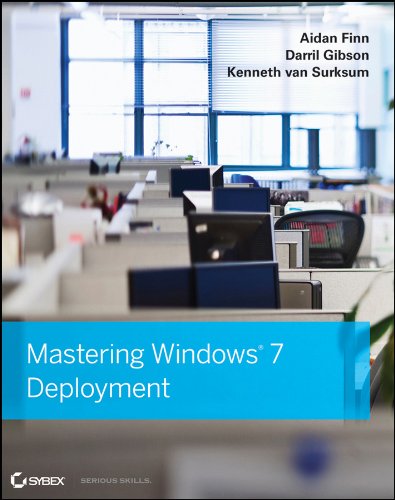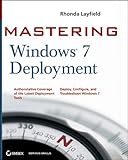These resources apply to Windows 8 but you could also use them in a Windows Server 2012 deployment or cloud.
Windows XP Support ends on 8th April 2014 AND THERE WILL BE NO EXTENSIONS no matter what the penguin-hugging activation-fearing “genius” you know at the bar says. This means no more security patches or hotfixes for XP after that date, and also means that the support statements of 3rd parties will become meaningless. It’s time to start planning an upgrade or become a breeding ground for malware.
Microsoft Assessment and Planning (MAP) Toolkit
A free tool that is an important first step in discovering what it is that you have on the network. Honestly, it’s a good tool. But, if your XP network is as shagged as many I’ve encountered, then remote admin will be broken on half the PCs and MAP won’t work. I have found that the push capability of the System Center Configuration Manager agent will get you the same information via hardware audits and Asset Intelligence.
Windows Assessment and Deployment Kit (Windows ADK)
This is a single free download that contains most of the tools you might use to plan, facilitate, and implement a Windows 8 deployment:
- Application Compatibility Toolkit (ACT): The Application Compatibility Toolkit (ACT) helps IT Professionals understand potential application compatibility issues by identifying which applications are or are not compatible with the new versions of the Windows operating system. ACT helps to lower costs for application compatibility evaluation by providing an accurate inventory of the applications in your organization. ACT helps you to deploy Windows more quickly by helping to prioritize, test, and detect compatibility issues with your apps. By using ACT, you can become involved in the ACT Community and share your risk assessment with other ACT users. You can also test your web applications and web sites for compatibility with new releases of Internet Explorer.
• Deployment Tools: Deployment tools enable you to customize, manage, and deploy Windows images. Deployment tools can be used to automate Windows deployments, removing the need for user interaction during Windows setup. Tools included with this feature are Deployment Imaging Servicing and Management (DISM) command line tool, DISM PowerShell cmdlets, DISM API, Windows System Image Manager (Windows SIM), and OSCDIMG.
• User State Migration Tool (USMT): USMT is a scriptable command line tool that IT Professionals can use to migrate user data from a previous Windows installation to a new Windows installation. By using USMT, you can create a customized migration framework that copies the user data you select and excludes any data that does not need to be migrated. Tools included with the feature are ScanState, Loadstate, and USMTUtils command line tools. - Volume Activation Management Tool (VAMT): The Volume Activation Management Tool (VAMT) enables IT professionals to automate and centrally manage the activation of Windows, Windows Server, Windows ThinPC, Windows POSReady 7, select add-on product keys, and Office for computers in their organization. VAMT can manage volume activation using retail keys (or single activation keys), multiple activation keys (MAKs), or Windows Key Management Service (KMS) keys.
• Windows Performance Toolkit (WPT): Windows Performance Toolkit includes tools to record system events and analyze performance data in a graphical user interface. Tools available in this toolkit include Windows Performance Recorder, Windows Performance Analyzer, and Xperf.
• Windows Assessment Toolkit: Tools to discover and run assessments on a single computer. Assessments are tasks that simulate user activity and examine the state of the computer. Assessments produce metrics for various aspects of the system, and provide recommendations for making improvements.
• Windows Assessment Services: Tools to remotely manage settings, computers, images, and assessments in a lab environment where Windows Assessment Services is installed. This application can run on any computer with access to the server that is running Windows Assessment Services.
• Windows Preinstallation Environment (Windows PE): Minimal operating system designed to prepare a computer for installation and servicing of Windows.
Microsoft Deployment Toolkit (MDT)
MDT is a free download. Think Ghost .. but with MUCH more functionality, e.g. capture user settings & files, blast the machine with a new image, install some software, patch it, and restore the user settings & files … all while you drink your coffee. MDT is so good that it’s considered an essential extension to Microsoft’s corporate solution: System Center 2012 Configuration Manager SP1.
Free: who can argue with free!?!?! Who needs Ghost!?!?!
Deploying Windows 8 with System Center 2012 Configuration Manager Service Pack 1
ConfigMgr + MDT gives you the best OS image deployment solution available. It simply blows people away when they see it in action.
BTW, Microsoft has the driver thing sorted so you can do the single-image deployment that a sector-based image, such as Ghost, hasn’t a hope of matching.
Deliver and Deploy Windows 8
This is an aggregation of content from all across Microsoft.
Johan Arwidmark
The Deployment God of the North is a must-see if he’s presenting at an event near you. This guy has forgotten more deployment wizardry than we mere mortals will ever learn. He’s also the author of Deployment Fundamentals, Vol. 4 “Deploying Windows 8 and Office 2013 Using MDT 2012 Update 1” available on:
In fact, for just $9.99, I thought it was such good value that I’ve just bought the e-book myself ![]()
Group Policy: Fundamentals, Security, and the Managed Desktop
You’ll want to manage and control those new deployments using GPO. Jeremy Moskowitz writes the book on the subject:
That should be enough to get you started!

